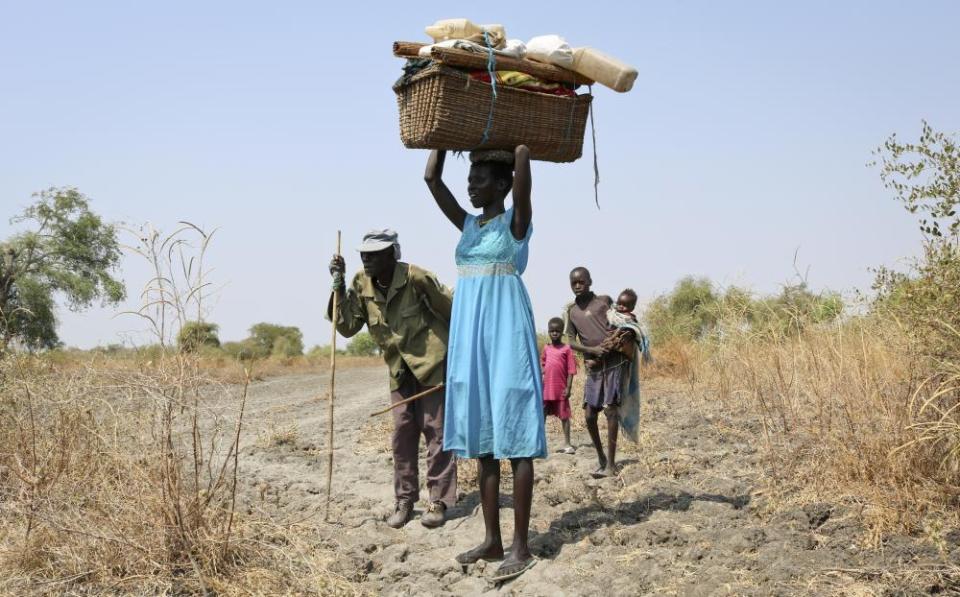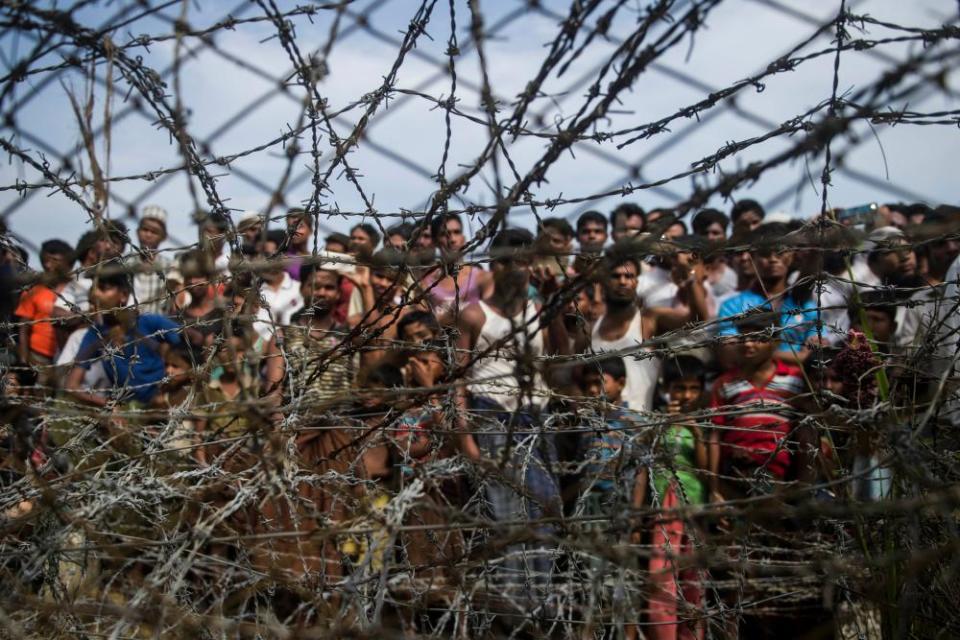Record 68.5 million people fleeing war or persecution worldwide

The number of people forced to flee their homes rose to a record high in 2017, with 16.2 million people newly displaced around the world. The figure includes people who have been displaced for the first time, and those who have been forced from their homes multiple times.
The figure of 68.5 million displaced people – 3 million higher than the total population of the UK – includes 25.4 million refugees, 40 million internally displaced and 3.1 million asylum seekers.
The increase came despite the return of more than 5 million displaced people to their countries of origins.
The annual figures, compiled by the UN refugee agency, UNHCR, saw five countries accounting for two-thirds of all refugees (excluding those defined as long-term Palestinian refugees): Syria (6.3 million); Afghanistan (2.6 million); South Sudan (2.4 million); Myanmar (1.2 million) and Somalia (986,400).
The new figures emerged after the actor and director Angelina Jolie, a special envoy for the UN agency, warned of a funding shortfall for the agency’s work in Syria – the largest group of displaced.
Speaking during a visit to Domiz Camp in Iraq on Sunday, home to 33,000 refugees displaced by the Syrian war, Jolie told a press conference that the agency’s appeal for Syrian refugees was hugely underfunded even in comparison with last year.
“When UNHCR’s Syria response was only 50% funded last year, and this year it is only 17% funded, there are terrible human consequences. We should be under no illusions about this. When there is even not the bare minimum of aid, refugee families cannot receive adequate medical treatment,” Jolie said. “Women and girls are left vulnerable to sexual violence, many children cannot go to school, and we squander the opportunity of being able to invest in refugees so that they can acquire new skills and support their families.”
The new totals come at the end of a decade of sharply rising numbers of displaced, which have risen inexorably from more than 42 million in 2007 to the current total. This means one in every 110 people in the world is currently displaced, with most of the sharp increase occurring in the last five years.

Although Syria once again dominated the figures, 2017 was also marked by a significant rise in displaced people from North and Central America, with increasing numbers of people journeying to seek asylum in Mexico and the US, even as Venezuelans continued to flow out to neighbouring countries.
Bucking the depressing global trends, however, crossings of the eastern Mediterranean decreased compared with 2016.
The totals also saw the sixth successive year of increases in the number of refugees under UNHCR’s mandate, with a rise of just under 3 million last year to a total just short of 20 million, the highest known total to date.
“As in previous years, Syria continued to account for the largest forcibly displaced population globally,” states the report.
“As of the end of 2017, there were 12.6 million forcibly displaced Syrians, comprising around 6.3 million refugees, 146,700 asylum-seekers, and 6.2 million IDPs [displaced people].
“The situations in the Democratic Republic of the Congo [DRC] and Myanmar deteriorated rapidly in the second half of 2017, affecting millions of people.
“The flight of refugees from Myanmar to Bangladesh occurred at a particularly rapid rate. Over 2017, 655,500 arrived in Bangladesh, mainly concentrated in 100 days from the end of August, making the humanitarian response very challenging. In addition, there was a large proportion of infants, children and pregnant women among refugees and IDPs from the DRC and Myanmar, adding a further layer of complexity for interventions.”

The UN High Commissioner for Refugees, Filippo Grandi, said: “We are at a watershed, where success in managing forced displacement globally requires a new and far more comprehensive approach so that countries and communities aren’t left dealing with this alone.
“But there is reason for some hope. Fourteen countries are already pioneering a new blueprint for responding to refugee situations and in a matter of months a new Global Compact on Refugees will be ready for adoption by the United Nations General Assembly.
“Today, on the eve of World Refugee Day, my message to member states is: please support this. No one becomes a refugee by choice; but the rest of us can have a choice about how we help.”
Matthew Saltmarsh, a spokesperson for UNHCR, underlined the worrying trends.
“What we are seeing in this data is overall displacement at an unprecedented high six years in a row,” he said. “In terms of refugee numbers it is the largest increase in a single year.”

 Yahoo News
Yahoo News 
